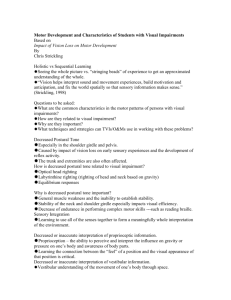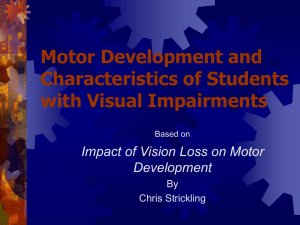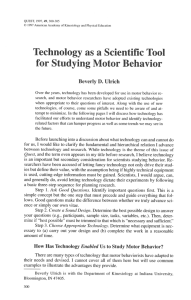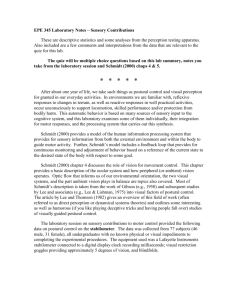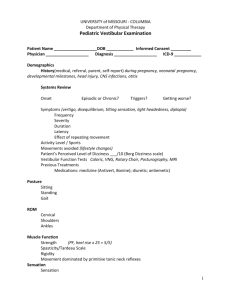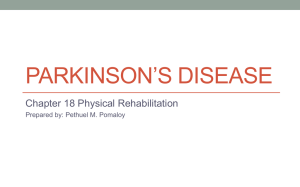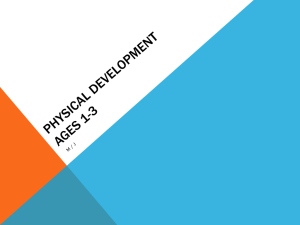COMPS-2 - 2015ot
advertisement
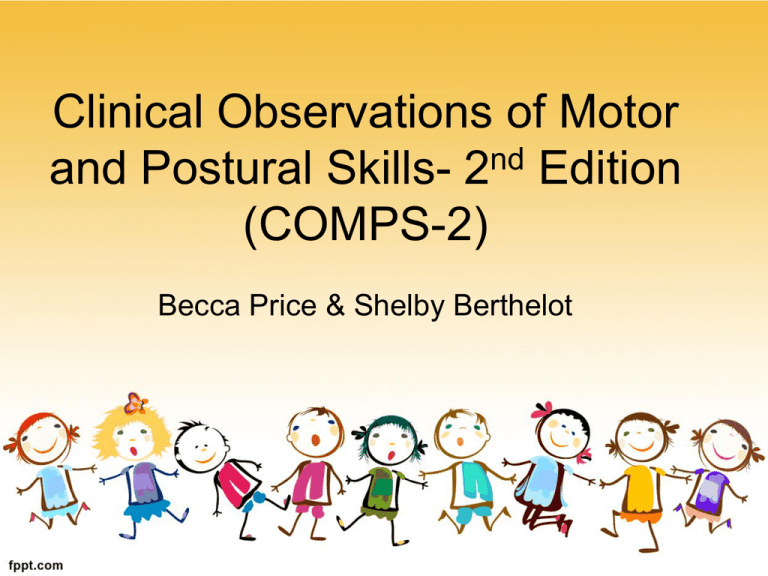
Clinical Observations of Motor nd and Postural Skills- 2 Edition (COMPS-2) Becca Price & Shelby Berthelot Purpose • Performance based screening test • Descriptive measure that helps identify presence of motor problems with a postural component • Helps identify if additional assessments need to be performed • Determine type of intervention approach to use • Children ages 5-15 Items • 6 items: Slow Movements Rapid Forearm Rotation Finger-Nose Touching Prone Extension Posture Asymmetrical Tonic Neck Reflex Supine Flexion Posture Testing Procedures • Recommended to perform 6 tasks in order • Last 3 tasks must be performed in order • Use standardized methods and exact wording in bold • Therapist performs task first then instructs them to imitate Test Development and Standardization • Initial Test – Went from 19 items to 6 – Used by experienced pediatric Ots in 2 cities – 123 children age 5 to 9.11 , 67 with DCD and 56 with no know motor problem • Upward age extension – 261 children between age 10-16 Psychometric Properties Reliability: Test-Retest = .92 Interrater • (4 different raters) = .87 Internal Consistency = .75 • Age 5- 9.11 = .77 • Age 10- 15.11 = .69 Validity: Content- established by expert opinion Construct- empirical item analysis Test Sensitivity: 100% for ages 5,8,9 82% for ages 6 & 7 Low percentage for ages >9.11 Criterion Concurrent- BOTMP subtests, Developmental Coordination Disorder Questionaire Predictive- Correctly classified ~ 80% of the time Test Length and Cost • Takes about 15-20 minutes to administer and score • Cost: – Manual = $36 – Score Sheets = $18 for 20 sheets – Therapro.com Scoring Test Results • Less than a 0 indicates problems in motor and postural skills • Greater than a 0 indicates normal functioning in motor and postural skills • A weighted score is given for each of the 6 items and a weighted total score is given Areas of Occupation Addressed • Play • Functional Mobility Assessment Approach • Bottom up – Tests the different components of motor control – Measures: • • • • • • Move slowly and symmetrically Cerebellar-vestibular integrity Cerebellar coordination Vestibular-proprioceptive processing dysfunction Degree of ATNR present Somato-dyspraxia Where the Tool is Used • Rehabilitation Clinic/ Health Care setting • Education Setting • Private Pediatric Clinic Frame of Reference • Motor control – Movement disorder – Postural stability – Motor coordination Measurement Concerns • The assessment does not take into consideration children who have neurological or neuromotor problems, such as cerebral palsy or epilepsy. • The results do not return normative data in the way of age equivalence. • The assessment is not meant to measure change in motor function over time. References • Clinical Observations of Motor and Postural Skills: 2nd Edition (COMPS). (2012, January 1). Retrieved May 30, 2014, from http://www.therapro.com/Clinical-Observations-of-Motor-andPostural-Skills-2nd-Edition-COMPS-P7628.aspx • Wilson, B., et al. (1992). Reliability and construct validity of the clinical observations of motor and postural skills. The American Journal of Occupational Therapy, 46(9), 775-783 • Wilson, B., Pollock, N., Kaplan, B., & Law, M. (2000). Clinical Obervations of Motor and Postural Skills (COMPS-2) ( 2nd ed.). Framingham, MA: Therapro, Inc.


